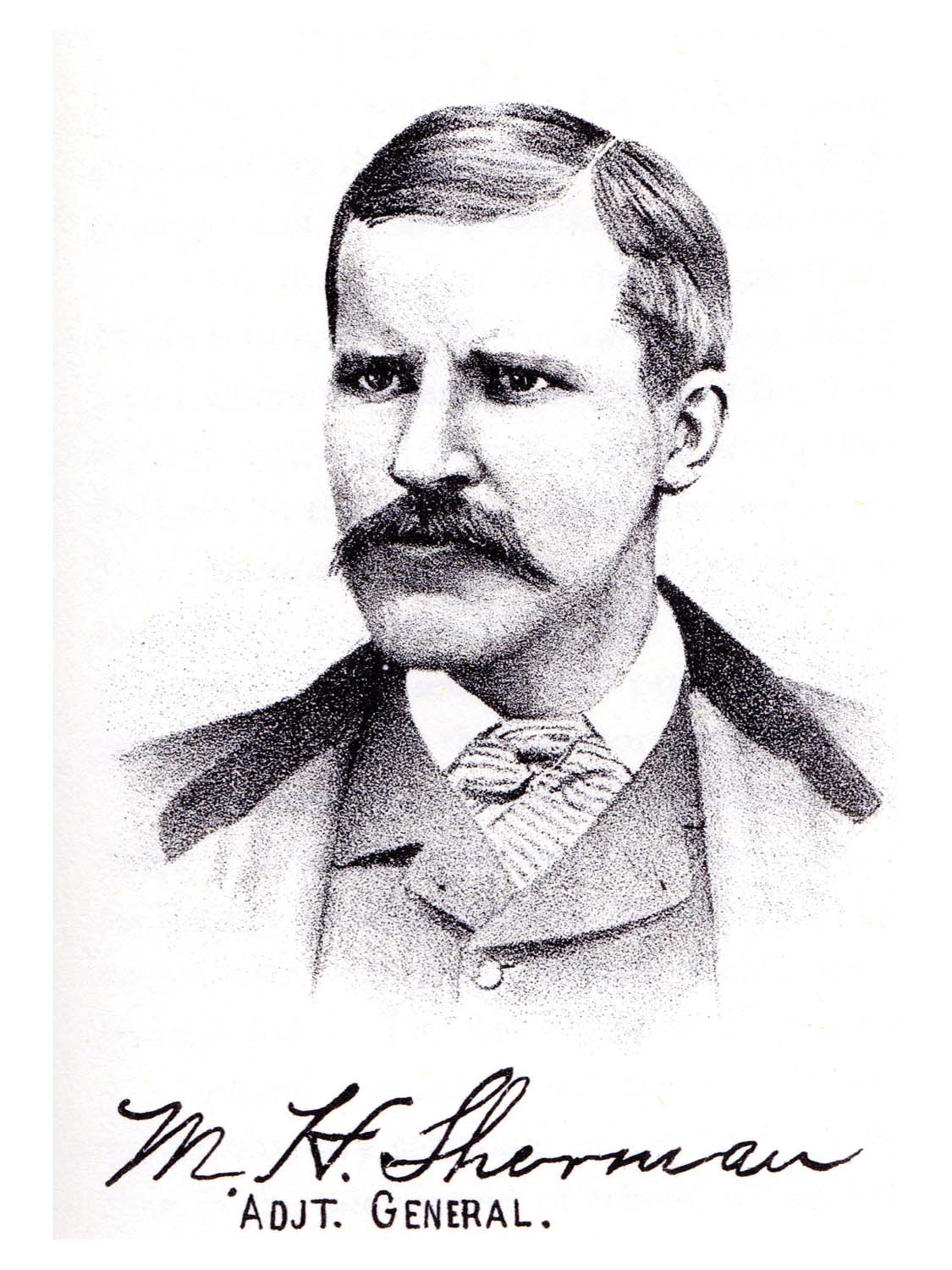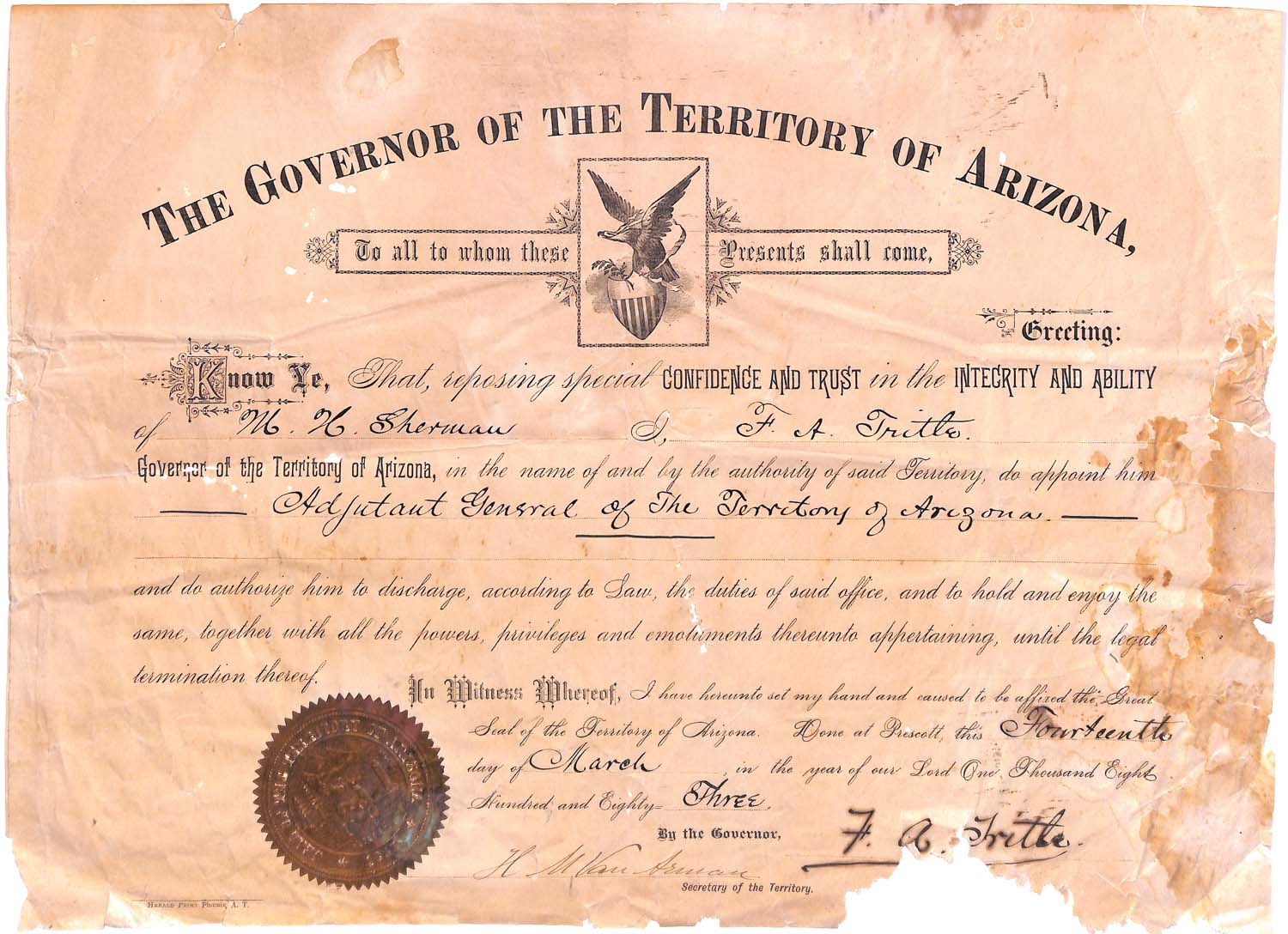Sherman Library & Gardens was founded in 1966 by Arnold D. Haskell. Haskell was a successful businessman that had a passion for education and gardens. He chose to name the iconic destination after his mentor Moses H. Sherman. The legacies of both men left an inspiring impact on history, horticulture, and the arts, which lives on through the efforts as a nonprofit.
Moses Hazeltine Sherman (1853-1932)
Early Life
Moses Hazeltine Sherman was born in West Rupert, Vermont on December 3, 1853. He spent his early years divided between the family farm in West Rupert and living with relatives in Salem, New York, six miles away. His father sometimes taught school in addition to farming; Sherman followed his father’s lead when he entered the Oswego Normal School to train as a teacher in 1869.
Sherman left Oswego in 1871 before completing his studies to take his first teaching job in Wisconsin, but by 1873 returned to complete his course of study at Oswego. From 1873 and 1874, he served as the principal of Hamilton (New York) Union Grade School.
Sherman became ill in 1874 with what doctors thought was tuberculosis. Standard treatment at the time was to move to a warmer climate, so when the city of Prescott in the Arizona Territory needed a teacher, Sherman responded.
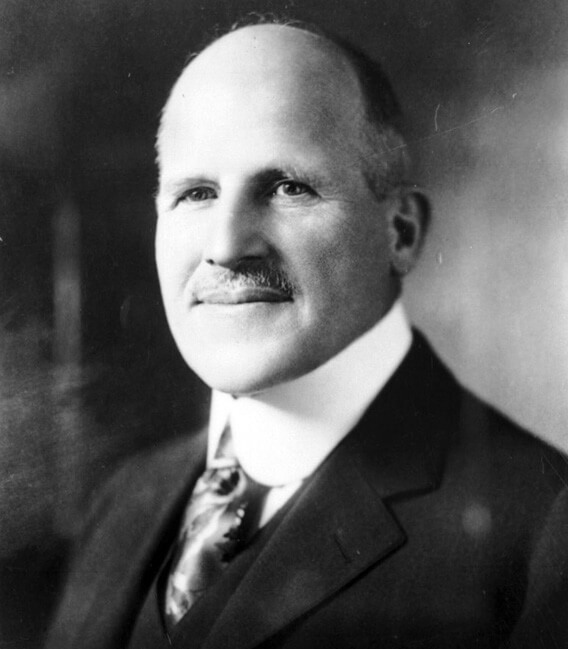
Arizona Period, 1874-1890
When Sherman arrived in 1875, Prescott was a frontier town of 2,000 people, dependent on nearby Fort Whipple for security. In little more than a year, he was able to convince Prescott voters to support a bond issue to replace the single-room schoolhouse with the top-quality Prescott Free Academy, a two-story brick building that included space for the Territorial government.
Sherman’s success was such that the governor appointed him Superintendent of Public Instruction for the Territory in 1879. Sherman was subsequently elected to the office and served as Superintendent until 1883. In that same year, the Governor appointed him Adjutant General of Arizona, a position responsible for the state militia.
The post came with the honorary title “General,” a moniker Sherman would use for the rest of his life.
Sherman’s political career in Arizona ended with his term as Adjutant General in 1887. Even as he served in government, he pursued a career in business, investing in mining and real estate at first. By 1883, he became one of the founders of the Valley National Bank, initially serving as its president.
He built and operated the Phoenix Street Railway and gained a controlling interest in the Phoenix Water Works. Sherman was also a major real estate developer, subdividing land in the Phoenix. When the capitol moved to Phoenix, Sherman donated the land for the new capital building, which not coincidentally adjoined land he owned and hoped to sell.
By the late 1880s, Sherman boasted that he paid more taxes than anybody else did in the Territory. By 1890, he decided to move to Los Angeles, to further his business empire.
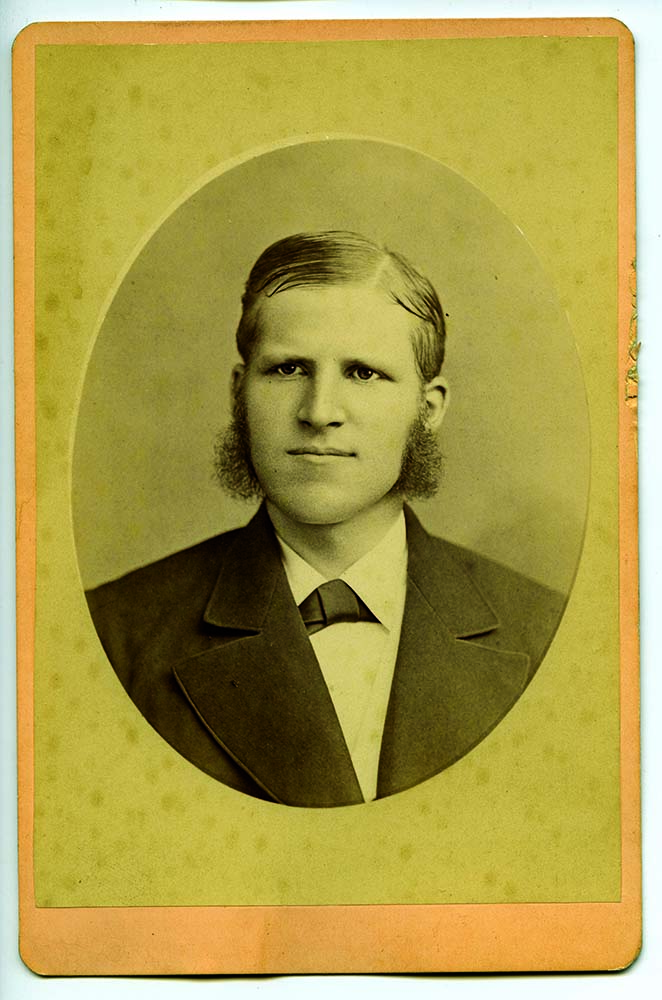
California, 1890-1932
Railroad Enterprises
Sherman arrived in Los Angeles in 1890 having already developed a street railway in Phoenix. Los Angeles had many small street railways, mostly horse-drawn cars. Sherman began acquiring these railways to create the first electrified street railway, the Los Angeles Consolidated Electric Railway. He built an extensive rail network in the heart of Los Angeles.
Sherman faced determined competition from the Los Angeles Cable Railway. He ultimately forced the Cable Railway to merge with his company, but the fight was costly. By 1895, the Los Angeles Consolidated Electric could not meet its obligation to the company’s bondholders. In 1897, a group of bondholders, led by Henry Huntington, acquired the company.
Sherman was undeterred, abandoning the street railway to develop intercity lines stretching east to Pasadena and west to the ocean. In 1895, Sherman began work on the first interurban rail line in Southern California: the Pasadena Pacific Railway.
This railway was the first step in a plan to lay rails west, through what is now Hollywood and on to Santa Monica and south along the coast. The culmination of this work was the Los Angeles Pacific Railway (LAP).
The LAP was more than just a means of moving people and goods; Sherman recognized the value of the railway in promoting the region in general and in selling land that he owned in particular.
Sherman and his brother-in-law E. P. Clark were partners in both the LAP and in land development. The two men had significant land holdings in Hollywood, what is now the west side of Los Angeles and Playa del Rey – all accessible from the LAP.

In 1908, Sherman struck a deal with the Southern Pacific Railroad to sell a majority stake in his company while he and E. P. Clark remained in charge of day-to-day management.
In 1911, the Southern Pacific forced the Great Merger, buying outright the Los Angeles Pacific and Henry Huntington’s interurban lines to form the Pacific Electric “Red Car” system.
From 1911 onward, Sherman began to focus on the development of land holdings, including the subdivision of the San Fernando Valley, the development of a vast ranch in the Mexicali Valley and the Tejon Ranch.
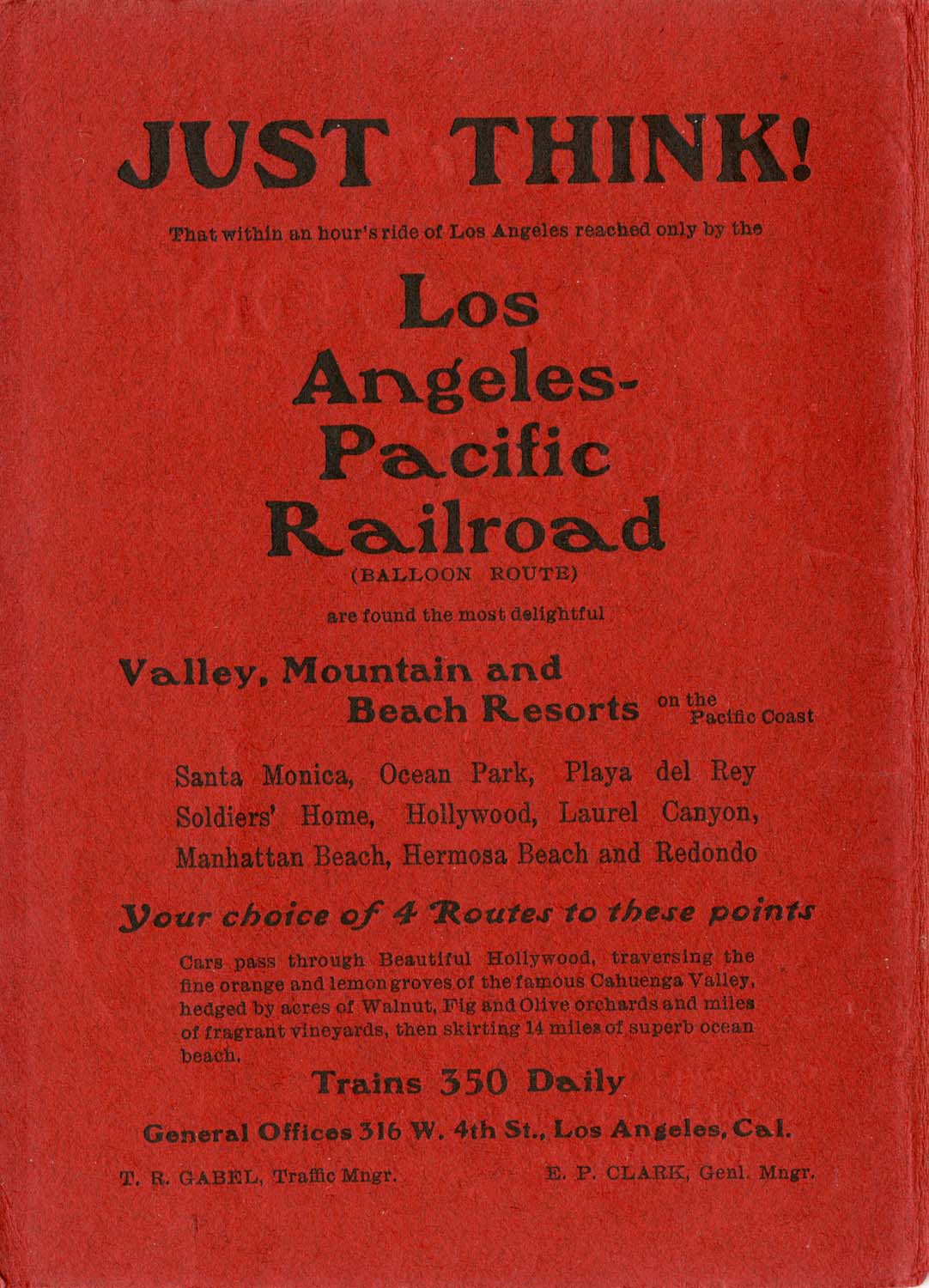
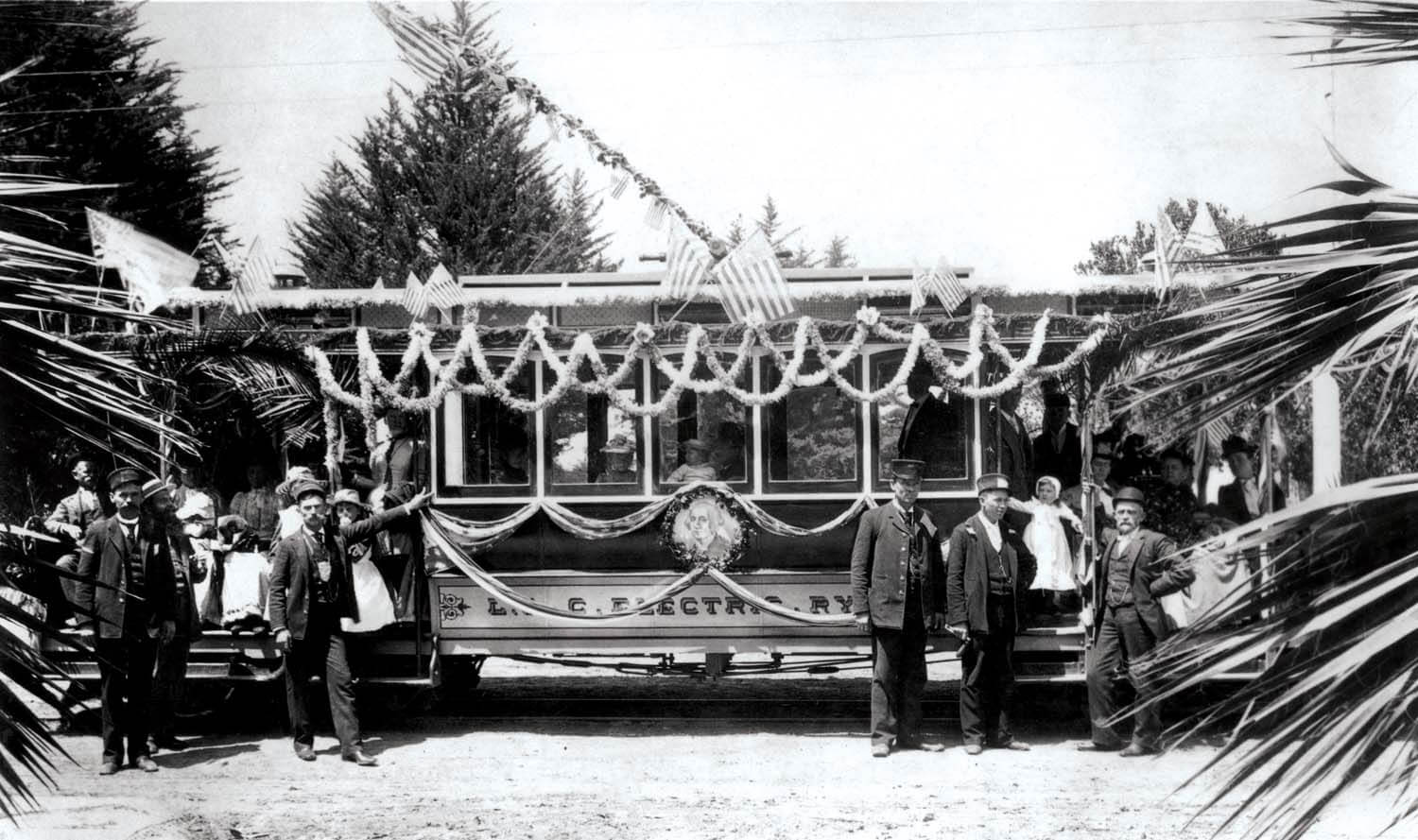
Board of Water Commissioners
Sherman served on the Board of Water Commissioners for the City of Los Angeles from 1903-1910. During those years, he and his fellow commissioners worked with William Mulholland to bring water to the city from the Owens Valley via the 200-mile Los Angeles Aqueduct.
In 1910, Sherman was forced to resign from the Commission when his political opponents charged him with conflict of interest because he was a partial owner of the building in which the Commission rented space.
Real Estate Enterprises
In 1910, Sherman, Harrison Gray Otis, Harry Chandler, Otto F. Brant, and Hobart J. Whitley bought 47,500 acres of the San Fernando Valley for $2.5 million from Isaac Van Nuys. The group formed the Los Angeles Suburban Homes Company, selling 30 shares to fellow investors, but retaining leadership of the company as the Board of Control.
Over the next several years, the Company created three new communities: Van Nuys, Owensmouth (now Canoga Park) and Marion (now Reseda).
The company sold other sections of the huge tract of land to shareholders at a discounted price. One such tract of 1,000 acres became “Sherman’s Ranch.” In 1927, Sherman entered an agreement with real estate promoters Thomas Bundy and Charles Albright to create a new community, named Sherman Oaks.
Even as Sherman, Chandler and Otis were subdividing the southern half of the San Fernando Valley, they sought additional land holdings. In 1912, the group purchased the 275,000-acre Tejon Ranch for $3 million. Sherman and his partners raised cattle and sheep on the ranch, leased land to farmers and benefited from the discovery of oil on the ranch.
In 1936, the ranch incorporated as the Tejon Ranch Company. Tejón Ranch remains the largest single privately held property in California.
In 1903, Harrison Gray Otis and a group of investors began buying land in Imperial Valley and northern Mexico to form the Colorado River Land Company (CRLC). While Sherman was not an initial investor, by the 1920s he was one of the principal investors in CRLC.
The Company owned over 840,000 acres of land in the Imperial and Mexicali Valleys including much of the delta of the Colorado River. Irrigation canals operated by the Company controlled water entering Northern Mexico and the Imperial Valley in the United States. While the Company initially focused on raising cattle, growing cotton eventually became the Company’s principal business. The company also leased land to farmers.
In 1922, Sherman organized the Hollywoodland syndicate to subdivide a section of the Hollywood hills, which he and his brother-in-law E. P. Clark owned.
Sherman and Clark joined with Harry Chandler, publisher of the Los Angeles Times, and developers Tracey Shoults and Sydney H. Woodruff to create the Hollywoodland subdivision. While the business venture had limited success, it resulted in one of the world’s iconic symbols – the Hollywood sign.
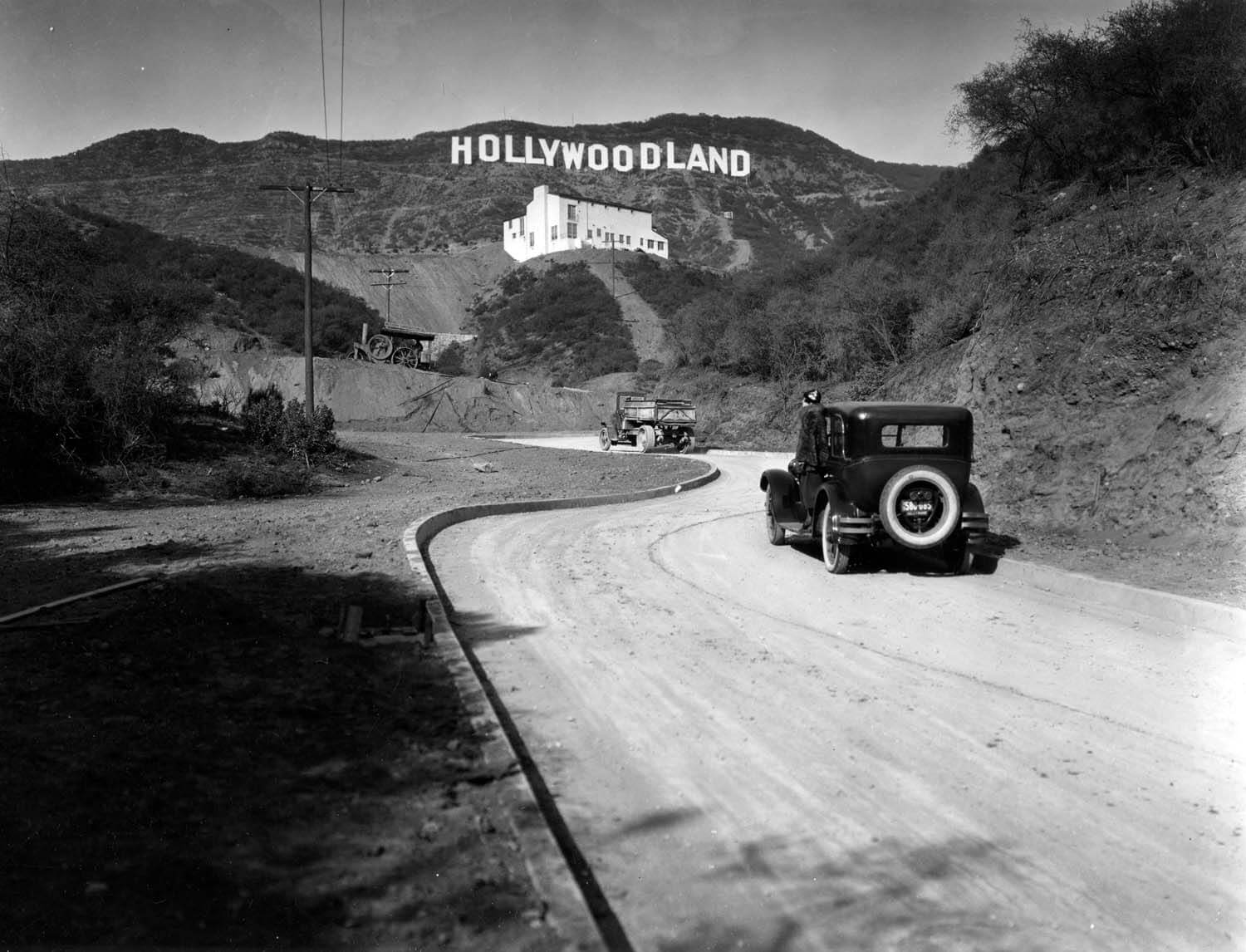
Personal Life
During his time in Arizona, Sherman married Henrietta “Hattie” Pratt and the couple had two daughters, Hazeltine and Lucy. When Sherman moved to Los Angeles in 1890, he and his wife separated.
Hattie, Hazeltine and Lucy eventually moved to a home in San Francisco. Sherman lived for many years in the Westminster Hotel in downtown Los Angeles. The couple divorced in 1907. Sherman remained close to his daughters, establishing trusts to support them after his death. He never remarried.
Sherman’s circle of friends were his business associates and their families.
He was particularly close with Harry Chandler, whom he often addressed as “HC.” The two would often play dominoes on Sunday evenings. He was also close to his brother-in-law E. P. Clark and developer R. C. Gillis.
These men and other friends would retreat to Tejon Ranch or into Mexico for extended camping trips to escape the pressures of business. Sherman also regularly attended the Bohemian Grove “jinks,” a gathering of influential men in the Northern California sequoias.
In the final years of his life, Sherman suffered a growing number of health problems. Arnold Haskell took over most of the day-to-day management of Sherman’s businesses by the mid-1920s. In failing health, Sherman moved to a home on Bay Island, in Newport Harbor.
On September 9, 1932, “The General” passed away at the age of 78.


